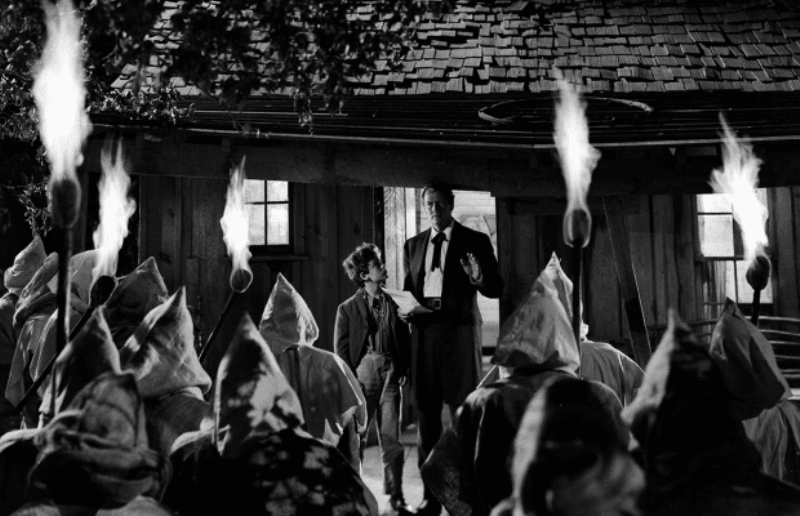« (...) In fact the art of Tourneur Jr. is secret and stubborn: even though this cinéaste accomodated every assignment, he was always able, even in the worst stories, to impose objectively and without bothering anyone (least of all the spectator) his point of view... The way Tourneur films - with the sureness of a sleepwalker - imparting a unity of rhythm that borders on the monotonous to his mise en scène, refers all differences to the essential one: the thematic opposition between the medicine of the spirit and the medicine of the body... Tourneur believes in what can seem like dime-store irrationalism, which recurs throughout his films, but since his mise en scène is entirely based on this belief, its logic gives his belief objective form... For example, in the very beautiful scene where the boy is poisoned objectively by the well-water, but subjectively by the way the magician addresses him during his performance.
All this reminds us of Dreyer: the resistance of bodies, resurrections, miracles, the force of the Word (the reading of Famous's will to the Klan members - a scene where non-differentiation is carried about as far as it can go), or the scene where the boys lying on the hay-wain watch the leafy branches passing overhead, which recalls by contrast the voyage in the coffin in Vampyr. In Tourneur and in Dreyer there is the same close attention to light and to vocal dynamics. But something very strong separates them, in which we can see the influence of Hollywood.
The laws governing the economy of the spectacle are not the same in their respective films, but they are both extreme cinéastes: Dreyer in his revolt (and its consequence: intransigence - no one has ever accepted less), Tourneur in his acceptance (and its consequence: renunciation - no one ever revolted less against his working conditions). The first wanted to seize the absolute of life; the second explored as deeply as is possible the relativity of art. »
quinta-feira, 27 de março de 2008
Biette
Assinar:
Postar comentários (Atom)




Nenhum comentário:
Postar um comentário